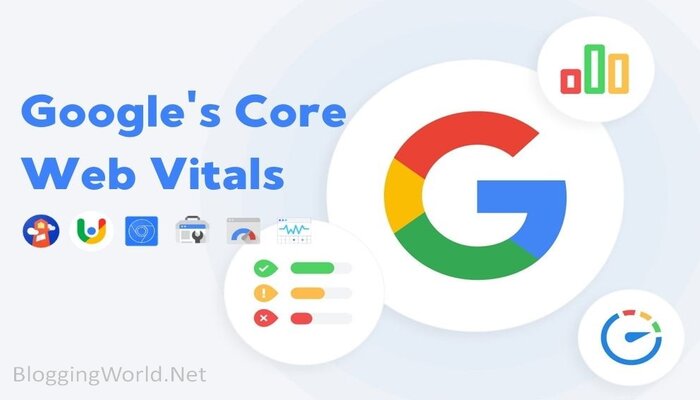With Google emphasizing user experience as a key ranking factor, Core Web Vitals have become essential to SEO success. These performance metrics focus on site speed, interactivity, and visual stability, directly affecting search rankings and user engagement. Understanding Core Web Vitals and implementing improvements can significantly enhance a website’s performance and visibility.
Table of Contents
Understanding Core Web Vitals
Google’s Core Web Vitals consist of three key metrics:
- Largest Contentful Paint (LCP): Measures how long it takes for the main content to load. A good LCP should be under 2.5 seconds.
- First Input Delay (FID): Evaluates interactivity by measuring the delay between a user’s first interaction and the browser’s response. A good FID should be under 100 milliseconds.
- Cumulative Layout Shift (CLS): Assesses visual stability by measuring unexpected shifts in page content. A good CLS score is below 0.1.
How Core Web Vitals Affect SEO
Google uses Core Web Vitals as a ranking factor, rewarding sites that provide a smooth and fast user experience. Poor scores can lead to increased bounce rates, reduced dwell time, and lower rankings. Ensuring optimal performance is crucial to maintaining high visibility on search engine results pages (SERPs).
How to Improve Core Web Vitals
1. Optimizing Largest Contentful Paint (LCP)
A slow LCP indicates delayed page loading, which can frustrate users and increase bounce rates.
Solutions:
- Optimize images by compressing them without compromising quality.
- Use lazy loading to defer non-essential images and videos.
- Upgrade web hosting to a faster server or use a Content Delivery Network (CDN).
- Minimize render-blocking resources such as JavaScript and CSS.
- Enable browser caching to speed up repeated visits.
- Implement server-side rendering (SSR) to speed up content delivery.
- Optimize database queries to reduce server response time.
Also Read: 20 Topics to Keep Your Blog Fresh and Interesting
2. Enhancing First Input Delay (FID)
A poor FID means users experience delays when trying to interact with a webpage.
Solutions:
- Minimize JavaScript execution time to reduce delays.
- Break up long tasks using web workers and asynchronous loading.
- Reduce the impact of third-party scripts such as ads and trackers.
- Implement browser caching and preloading strategies.
- Prioritize input responsiveness by reducing unnecessary event listeners.
- Optimize CSS animations and transitions to improve responsiveness.
Also Read: Core Web Vitals and SEO: Improve Your Site’s Performance
3. Reducing Cumulative Layout Shift (CLS)
Unexpected layout shifts disrupt user experience and can lead to accidental clicks.
Solutions:
- Define width and height attributes for images and videos to prevent layout shifts.
- Use CSS aspect ratio boxes to maintain space for dynamic content.
- Avoid inserting new content above existing content unless triggered by user interaction.
- Preload fonts to prevent layout shifts due to late font loading.
- Reserve space for ads and dynamic elements to maintain layout stability.
- Implement proper lazy loading techniques to avoid content jumps.
Also Read: The Best Content Optimization Techniques for SEO Success 2025
Additional Strategies to Boost Core Web Vitals
1. Utilize a Content Delivery Network (CDN)
A CDN distributes content across multiple servers, reducing load times by serving users from the nearest location. Using edge caching further enhances performance.
2. Enable Gzip and Brotli Compression
Compressing text files such as HTML, CSS, and JavaScript reduces file sizes and speeds up page load times. Brotli offers even better compression rates than Gzip.
3. Optimize Web Fonts
Large font files can delay rendering. Use modern formats like WOFF2 and limit the number of font variations. Also, use font-display: swap; to avoid invisible text during loading.
4. Improve Server Response Time
A slow server negatively impacts all Core Web Vitals. Optimizing databases, using caching mechanisms, and reducing redundant queries can help.
5. Conduct Regular Performance Audits
Using tools like Google PageSpeed Insights, Lighthouse, and Chrome DevTools can help identify performance bottlenecks and areas for improvement.
6. Implement Efficient Lazy Loading
Lazy loading images, videos, and iframes prevents unnecessary resource loading, improving LCP and CLS.
7. Reduce HTTP Requests
Minimizing HTTP requests by consolidating CSS and JavaScript files, using sprites, and eliminating unused scripts helps improve loading speed.
8. Use Caching Mechanisms
Leverage browser caching, service workers, and server-side caching to reduce repeated load times for returning visitors.
Also Read: Best Privacy Settings for Social Media to Protect Your Data
Monitoring and Measuring Core Web Vitals
Regularly tracking performance ensures continued optimization.
Recommended Tools:
- Google Search Console (Core Web Vitals report)
- Google PageSpeed Insights (detailed improvement suggestions)
- Lighthouse (performance analysis)
- Web.dev Measure (user experience evaluation)
- GTmetrix (detailed site speed insights)
- Chrome DevTools (real-time performance debugging)
Common Mistakes to Avoid When Optimizing Core Web Vitals
- Ignoring Mobile Performance: Mobile users often experience slower loading times. Optimize your site for mobile-first indexing.
- Not Testing Different Browsers: Ensure your website performs well across all major browsers and devices.
- Overloading Pages with Ads: Excessive ads can slow down page speed and cause layout shifts.
- Forgetting About Security: Implementing HTTPS is crucial for performance and trustworthiness.
- Overusing Plugins: Too many plugins can bloat a website and slow down performance. Use lightweight alternatives.
Conclusion
Optimizing Core Web Vitals is crucial for SEO success and user satisfaction. By improving LCP, FID, and CLS, businesses can enhance website performance, increase engagement, and boost rankings. Implementing best practices such as image optimization, reducing JavaScript execution time, and leveraging a CDN ensures a fast and seamless browsing experience. Regular monitoring and updates will help maintain an optimized website in an ever-evolving digital landscape. With Google’s focus on user experience, investing in Core Web Vitals improvements will result in better rankings, increased traffic, and higher conversions.








